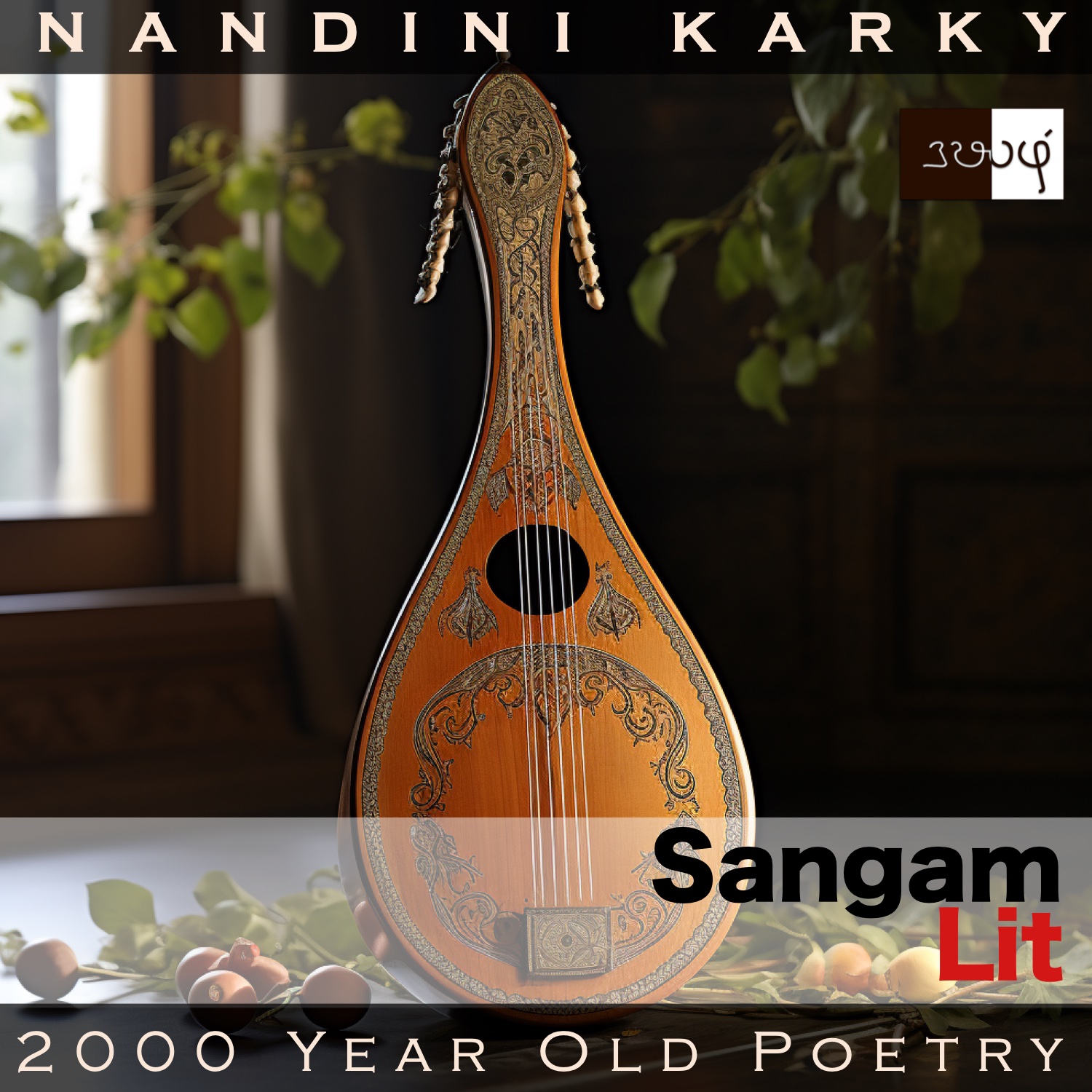Podcast: Play in new window | Download
Subscribe: Apple Podcasts | Spotify | Amazon Music | Android | iHeartRadio | Email | TuneIn | RSS | More
In this episode, we observe the care showered upon the wounded, as depicted in Sangam Literary work, Puranaanooru 281, penned by the poet Arisil Kizhaar. Set in the category of ‘Kaanji Thinai’ or ‘Defence’, the verse gives insight into the understanding of medicine in Sangam times.

தீம் கனி இரவமொடு வேம்பு மனைச் செரீஇ,
வாங்கு மருப்பு யாழொடு பல் இயம் கறங்க,
கை பயப் பெயர்த்து மை இழுது இழுகி,
ஐயவி சிதறி, ஆம்பல் ஊதி,
இசை மணி எறிந்து, காஞ்சி பாடி,
நெடு நகர் வரைப்பில் கடி நறை புகைஇ,
காக்கம் வம்மோ காதலம் தோழி!
வேந்துறு விழுமம் தாங்கிய
பூம் பொறிக் கழல் கால் நெடுந்தகை புண்ணே.
A unique song focusing on healing and recovery. In the previous verse, we saw the wife giving up hope about the wounds of her husband but in contrast here, there’s a proactive attitude perfectly captured by this prolific poet. His words can be translated as follows:
“Placing leaves of the sweet-fruited ‘Iravam’ tree and the ‘Vembu’ tree in our home, making the lute with a curved surface play along with many different instruments, moving our hands gently and applying the black paste of mustard seeds, playing a lily-shaped pipe, ringing musical bells, singing the ‘kanji’ tune, spreading fragrant smoke throughout the bounds of our tall mansion, come let’s protect him, my loving friend. For taking upon himself the attack on the king, here lies the noble lord, wearing warrior anklets etched with floral shapes, with wounds many!”
Time to delve into the intricacies here. The poet talks in the voice of a woman giving instructions about what should be done just then. She says that leaves from the ‘Ceylon Ironwood’ tree and ‘Neem tree’ must be brought and placed in the house. Let’s delve deeper into the qualities of these leaves shortly. Listening in, we hear the lady follow up that instruction by adding that the curved lute must be played with many accompanying instruments. Then, she adds that using the hands and fingers so very gently, a black paste possibly made of mustard seeds must be applied. From the herbal medicinal angle, she once again turns to music and says the ‘Ambal’ flute must be played, bells must be rung and the ‘Kanji’ melody must be sung. Stepping from the sense of sound to smell, she adds that the fragrant smoke of incense must be spread all over their home. She says all this to her confidante, whom we have met a lot in the ‘Aham’ section of Sangam literature. That friend is the rock and pillar to the lady before and after marriage. And finally, we come to the ‘why’ of these instructions, when the lady concludes with the words that all this must be done to heal the great wounds of the lord of the mansion, who bravely fought and defended the king of the land!
Now, zooming onto the ingredients in this therapy, we find two broad categories. One, is the herbal healers such as the leaves of ‘Iravam’, which is used as Ayurvedic medicine even today in the name of ‘Nagkesar’, and is said to stop bleeding and be pain-relieving. Likewise, the properties of neem leaves and mustard seeds are common knowledge and are the go-to items to ward off infections and fight inflammation respectively. The other category is the repeated stress on rhythm and melody, in mentioning about many different instruments being played, specific tunes being sung and the positive energy of bells being spread. The power of music in healing is scientifically accepted today and its plethora of benefits include reduced pain and stress, better sleep and revitalised immunity. As mentioned in this Harvard Health Blog, the power of music is very much tangible in bringing relief to the afflicted. Stunning to see this truth was discovered two thousand years ago and was common knowledge in a Sangam household. Beyond these facts, the priceless element here is the love and devotion of this wife to do all it takes to heal her beloved. A magnificent verse that soothes the mind and body of not only that wounded soldier two thousand years ago but also thoughtfully points the generations that follow in the direction of the two incomparable and irreplaceable healers we have – Nature & Music!




Share your thoughts...